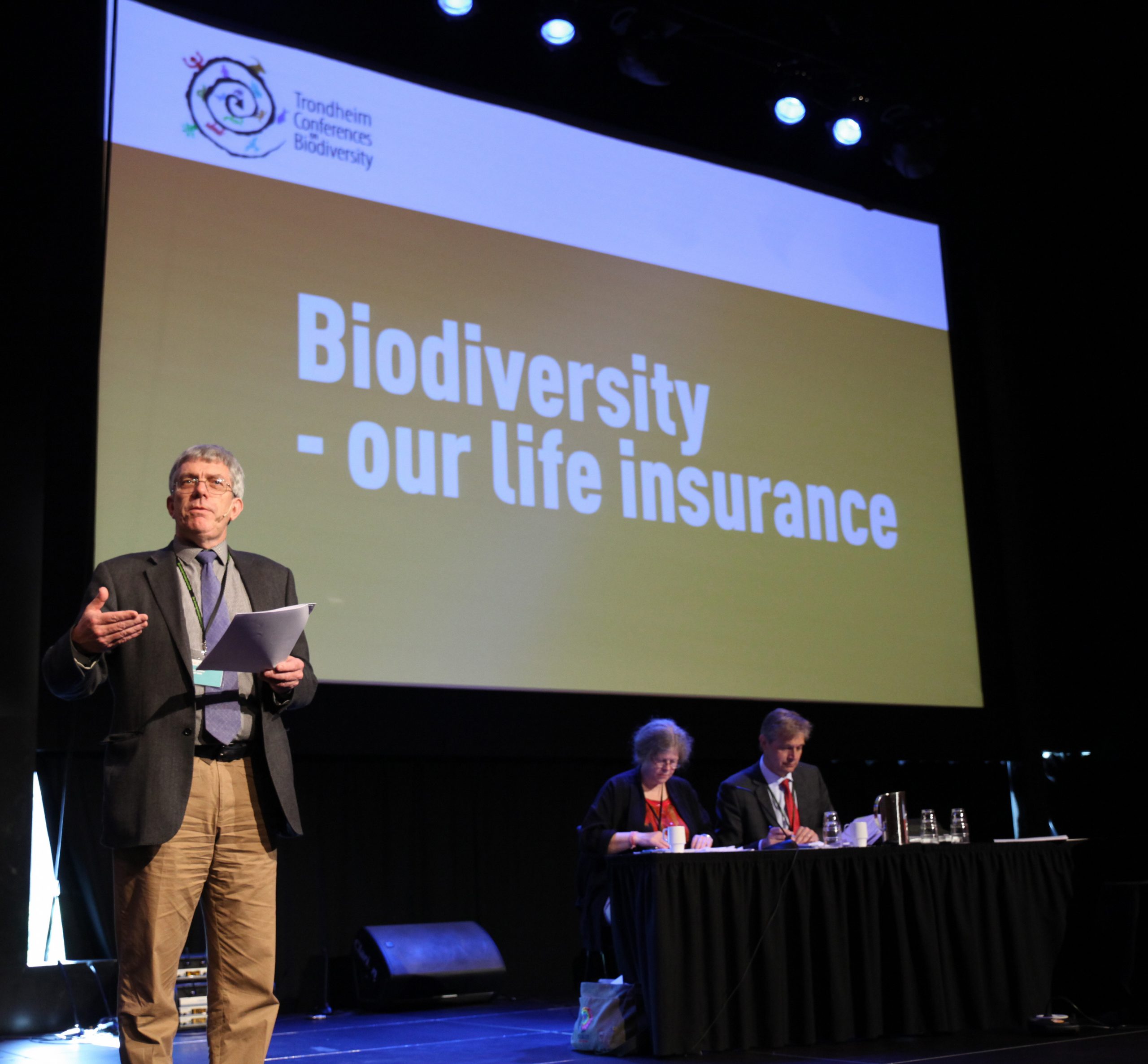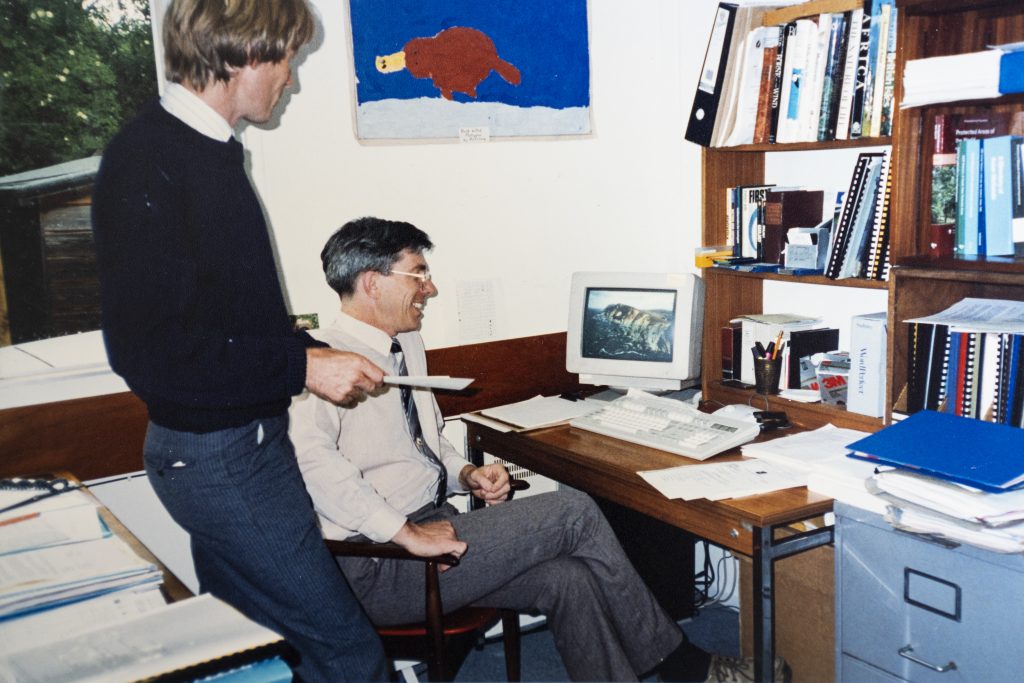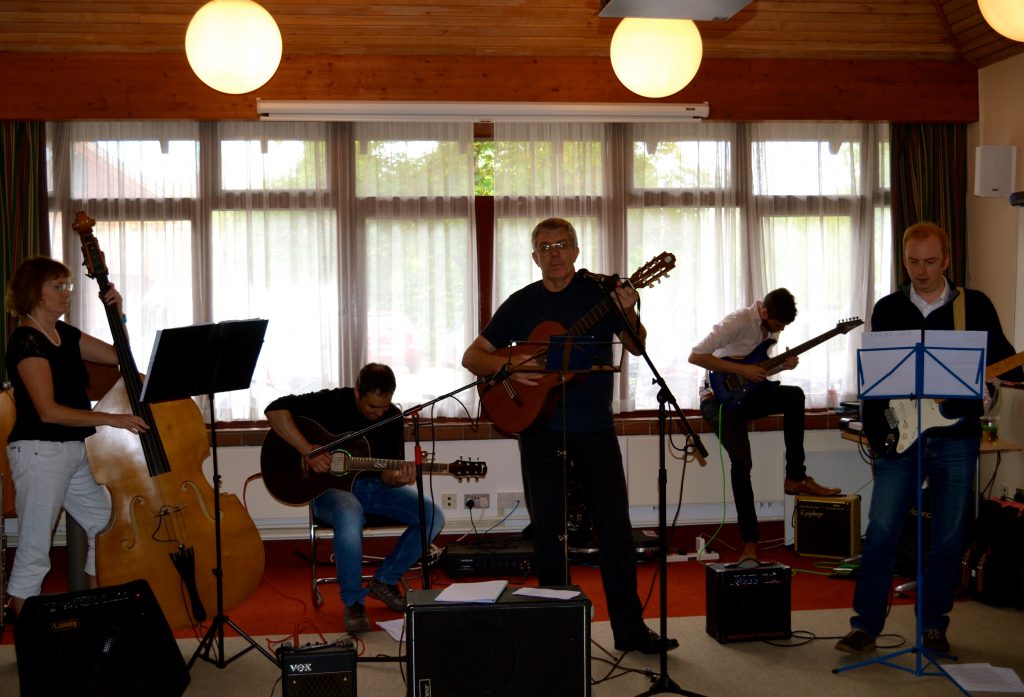News
Jerry Harrison: 40 years of UNEP-WCMC and global biodiversity policy

News | Jul 2021
This month marks UNEP-WCMC's Principal Technical Specialist, Jerry Harrison’s 40th year working at the Centre, and at the heart of global biodiversity policy. Over the last four decades, both the organisation and the international biodiversity policy landscape have changed significantly, and both have benefited from Jerry’s expert input.
“It has been noticeable over the years how biodiversity has gained increased political recognition”, Jerry says.
1981-92: Developing the World Database on Protected Areas
When Jerry joined in 1981, the Centre was part of the International Union for Conservation of Nature (IUCN) and remained so until 1988. During those years, Jerry collaborated with experts to develop what is now known as the World Database of Protected Areas (WDPA), the authoritative global database on terrestrial and marine protected areas.
The database, now the cornerstone of the Protected Planet Initiative, tracks progress towards achieving global targets on protected and conserved areas.
When Jerry first worked on developing the database, there was no access to the internet and very limited computer capacity. The only way for the team to collect information on protected areas was to send letters and attend international meetings, such as the 1982 World Parks Congress in Bali and the First International Congress on Biosphere Reserves held in Minsk in 1983, and the regional working sessions of the IUCN Commission on National Parks and Protected Areas (now the World Commission on Protected Areas). Today, the WDPA records 265,684 protected areas and underpinned the recent landmark Protected Planet Report 2020.
Terms like “biodiversity” and “sustainable development” only really started to be used in the second half of the 1980s.

1992-2000: Biodiversity on the global agenda
In 1992, at the Earth Summit in Rio de Janeiro, 150 government leaders signed the Convention on Biological Diversity (CBD). Global commitments were also made relating to the United Nations Convention to Combat Desertification (UNCCD) and the United Nations Framework Convention on Climate Change (UNFCCC). Together, these are known as the ‘Rio Conventions’.
“The adoption and entry into force of the three Rio Conventions in the 1990s has been crucial in increasing focus on the environmental pillar of sustainable development. Incredibly significant has been the recognition in first the Millennium Development Goals and then the Sustainable Development Goals that biodiversity underpins the achievement of many societal aspirations,” Jerry says.
From early in his life Jerry has worked tirelessly to support the Parties and Secretariat to the CBD, including working on publications such as the first Global Biodiversity Outlook developed by the CBD, the Global Biodiversity Assessment, and the Guidelines for Country Studies on Biological Diversity.
Since then, the protection of biodiversity is increasingly acknowledged by governments worldwide as essential to achieving sustainable development, as evidenced by The Economics of Biodiversity: The Dasgupta Review published by the UK government earlier this year.
2000-2020: Sustainable development and the Aichi Targets
In 2000, the same year WCMC became part of the UN Environment Programme, world leaders established the Millennium Development Goals (MDGs) to combat poverty. Two years later the CBD adopted the target “to achieve by 2010 a significant reduction of the current rate of biodiversity loss”.
UNEP-WCMC recognised the importance of tracking progress in achieving such targets, and in 2003 Jerry worked with CBD Secretariat colleagues to install the widescale use of indicators by the CBD and the establishment of the Biodiversity Indicators Partnership. UNEP-WCMCs work on indicators continues to this day.
Also in 2003, Jerry worked with colleagues in the UN Development Programme (UNDP) and other organisations on the critical role of biodiversity and ecosystem services in achieving the MDGs, which led, amongst other things, to the 2010 target being incorporated into the MDGs in recognition of the linkages between environmental protection and poverty reduction.
The MDGs were then followed in 2015 by the Sustainable Development Goals (SDGs), with Goals 14 and 15 specifically committed to halting biodiversity loss. The inclusion of these goals and their targets in the 2030 Agenda for Sustainable Development highlighted that biodiversity is at the core of global sustainable development.
These big steps were backed by the work of other intergovernmental processes, such as the Intergovernmental Science-Policy Platform on Biodiversity and Ecosystem Services (IPBES). Jerry played a key role in supporting IPBES’ establishment and early years of operations.
“Negotiation of the Aichi Biodiversity Targets in 2010 was the first real attempt to develop a coherent set of interrelated targets at the global level, that reflected both the breadth of biodiversity issues and the concern about the many threats to biodiversity and ecosystem services,” Jerry says.
2021 and onwards: a crucial decade for nature
Looking ahead, world leaders are anticipated to adopt a new set of global goals and targets in the post-2020 global biodiversity framework. This plan, being negotiated at the CBD, is expected to set clear goals and targets for the conservation and sustainable use of biodiversity, and the fair and equitable sharing of benefits. It is expected to also incorporate a monitoring framework and encourage the provision of adequate means of implementation.
The next ten years are a crucial window for tackling the interlinked global crises, including biodiversity loss. Jerry sees big prospects for the Centre playing a part in this agenda.
“We have an incredibly good and growing staff of young people – we have even grown during lockdown! We are strong on biodiversity. Going forward, we must link our efforts even more to the broader environmental agenda. For example, if we can develop projects that support all three Rio Conventions simultaneously, our impact can increase substantially.”
UNEP-WCMC is grateful for Jerry’s contributions to the Centre’s work so far and is fortunate to keep benefitting from his expertise as we continue to work for people and the planet. As Jerry sang back in 2000 when WCMC entered into collaboration with UNEP: “we have a bright future flying under the blue flag”.

Have a query?
Contact us
communications@unep-wcmc.org
